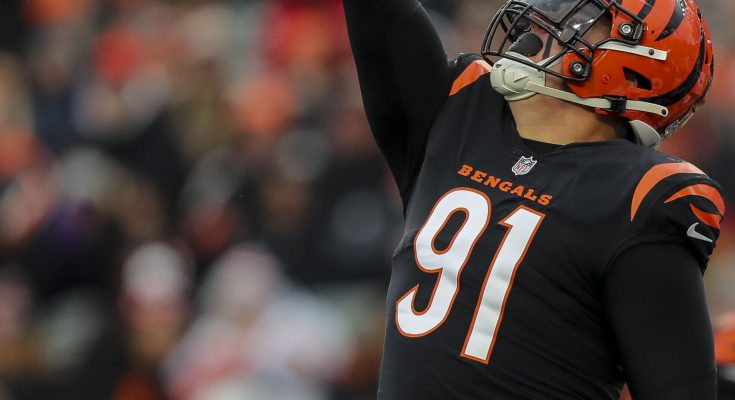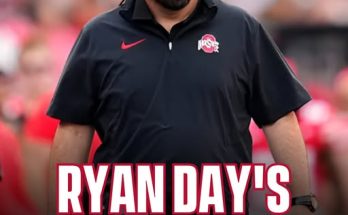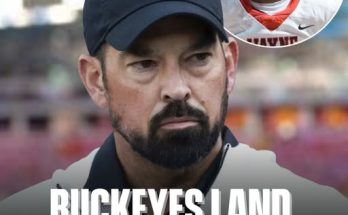Trey Hendrickson’s recent decision to reject the Cincinnati Bengals’ latest contract offers lacking future guarantees has sent ripples throughout the NFL landscape and ignited conversations about player leverage, organizational strategy, and the fine balance between short-term success and long-term security. Hendrickson, widely regarded as one of the league’s premier pass rushers, has become a vital cornerstone for the Bengals’ defense since his arrival. His ability to wreak havoc in the backfield and disrupt opposing quarterbacks has elevated him into the upper echelon of defensive ends, making his current contract standoff all the more significant. For Bengals fans, this latest development is not just about one player’s future but a stark reminder of the business side of football and the difficult decisions that teams and players must make when careers and legacies are at stake.
The NFL is a league where player performance and organizational needs often collide. For Hendrickson, who has proven his worth over the past several seasons with consistent sack totals, relentless effort, and leadership on and off the field, the desire for guaranteed security is more than understandable. Defensive players, particularly those who rely on explosiveness and power like Hendrickson, face a higher risk of injury with every snap. While his current contract pays him well, it is the structure of NFL deals that often leaves players vulnerable once guaranteed money is depleted. The Bengals’ reluctance to offer future guarantees suggests they are hedging their bets, possibly wary of long-term financial commitments in a league governed by a hard salary cap. This impasse is less about a lack of appreciation for Hendrickson’s skills and more about organizational philosophy and the difficult balancing act of maintaining roster flexibility while rewarding elite talent.
For Hendrickson, rejecting the Bengals’ latest offers may also be about setting a precedent for how he values himself and his career trajectory. Over the past few years, he has evolved from being seen as a solid starter to a defensive force capable of altering the outcome of games. His ability to get pressure on quarterbacks, force hurried throws, and create turnovers has been critical to the Bengals’ recent success, including their deep playoff runs. Players like Hendrickson know that their window of peak performance is relatively short, and maximizing financial security during that window is critical. By rejecting the offer, he has effectively communicated that he is unwilling to settle for anything less than what he perceives as his true value, especially if future guarantees are not on the table.
From the Bengals’ perspective, this situation is equally complex. Cincinnati is in a period where they must carefully manage their salary cap while trying to maintain a competitive roster around franchise quarterback Joe Burrow. With Burrow’s massive contract already taking up significant cap space, the team must strategically allocate resources to ensure they can field a complete, competitive team for years to come. While Hendrickson’s importance to the defense cannot be overstated, the Bengals’ front office may feel that giving substantial future guarantees to a defensive end approaching the latter stages of his prime carries inherent risks. Football is unpredictable, and injuries can derail even the most promising careers. The Bengals have likely calculated that structuring contracts with less guaranteed money allows them greater financial flexibility in case of unforeseen circumstances.
What makes this situation particularly intriguing is Hendrickson’s standing in the locker room and with the fan base. He is not just another player—he is one of the emotional leaders of the defense, someone who sets the tone with his physical play and relentless motor. If negotiations between Hendrickson and the team turn sour, it could potentially create tension within the team’s defensive unit, especially if players feel that management is unwilling to properly reward their efforts. NFL locker rooms are tight-knit environments where respect and fairness are valued, and a star player’s contract dispute can sometimes have ripple effects on team chemistry.
There is also the question of leverage. Hendrickson’s decision to reject the Bengals’ latest offers might be a calculated gamble, betting that his value will only continue to rise if he performs at a high level in the upcoming season. The NFL has become a pass-heavy league, and the ability to pressure quarterbacks is at a premium. Teams are constantly looking for elite pass rushers, and if the Bengals are unwilling to meet his demands, there are likely other franchises that would be more than happy to do so. Hendrickson’s camp may be using this as a negotiation tactic to either force the Bengals to revisit their stance or to create a situation where a trade becomes a viable option.
Historically, players who bet on themselves in similar situations have had mixed results. Some, like Kirk Cousins or Darrelle Revis, were able to parlay short-term deals into massive guaranteed contracts by continuing to perform at a high level. Others, however, have suffered injuries or seen their production decline, leading to less favorable outcomes. Hendrickson is certainly aware of this reality, which is why the stakes are so high. His rejection of the Bengals’ current offer signals that he is confident in his ability to maintain or even exceed his current level of play, thus increasing his leverage down the road.
The Bengals, for their part, must tread carefully. Losing a player like Hendrickson, either due to contract disputes or eventual free agency, could have serious consequences for their defensive scheme. While the team has other talented defenders, few possess Hendrickson’s unique combination of speed, power, and technique. The defensive line’s ability to generate pressure without heavy blitzing is a key part of Cincinnati’s strategy, and Hendrickson is at the center of that approach. Finding a suitable replacement for his production, should things sour, would not be an easy task.
Fans, too, are watching this situation closely. In an era where player movement has become more common and loyalty is often tied to contract structures rather than sentiment, the Bengals’ front office faces the challenge of balancing financial prudence with fan expectations. Hendrickson’s popularity among Bengals supporters is undeniable. His high-energy style of play and knack for delivering in clutch moments have endeared him to the fan base, making any potential fallout from these negotiations all the more significant. The last thing the Bengals want is to alienate their fans by appearing unwilling to retain a player who has been so integral to their recent success.
One potential scenario that could unfold is the Bengals revisiting their offer with more creative structuring. While future guarantees are a sticking point, there are ways to craft deals that satisfy both parties. For example, the Bengals could include performance-based incentives, roster bonuses, or guaranteed salary for the next few seasons without committing to long-term guarantees that extend far into the future. Such compromises have worked in the past for other franchises, allowing them to retain top talent while managing risk.
Another possibility, though less ideal for Bengals fans, is that this situation could lead to trade rumors if no agreement is reached. In the modern NFL, teams are less hesitant to move star players if they believe they can get substantial value in return, particularly if a contract dispute threatens to linger. While this is speculative, the mere thought of Hendrickson being on the trade market would instantly draw attention from multiple teams looking to bolster their pass rush.
Beyond the immediate implications, Hendrickson’s contract standoff highlights a larger trend in the NFL where elite players, especially those at positions like pass rusher or wide receiver, are becoming more assertive in securing guaranteed money. As the league continues to generate record revenues, players are increasingly pushing for deals that offer greater security, and Hendrickson’s stance reflects this evolving dynamic. For young players entering the league, his situation serves as a blueprint for how established veterans can assert leverage when they believe they’ve outperformed their contracts.
For now, all eyes will remain on how the Bengals and Hendrickson proceed. Training camp and preseason are times when contract disputes often come to the forefront, as players decide whether to hold out or report while negotiations continue. Hendrickson’s rejection of the latest offer could either be the prelude to a breakthrough deal or the beginning of a more contentious standoff. Given his importance to the team’s defensive identity, the Bengals will undoubtedly be under pressure to find a resolution that keeps their star pass rusher happy and motivated.
In the end, this situation is a reminder that professional football is as much about business as it is about the game itself. Trey Hendrickson’s refusal to accept a deal without future guarantees underscores the reality that NFL players, despite their passion for the sport, must also think about their financial well-being and long-term future. For the Bengals, it is a test of their ability to balance loyalty to their stars with the fiscal realities of building a sustainable roster. Whether this standoff ends with Hendrickson getting the security he desires or with a more dramatic outcome like a trade or holdout remains to be seen, but one thing is certain: this is a storyline that will continue to capture attention throughout the NFL season.
Would you like me to expand this into a 2600-word deep-dive article that includes Hendrickson’s career rise, comparisons with similar contract disputes, and potential trade scenarios?



